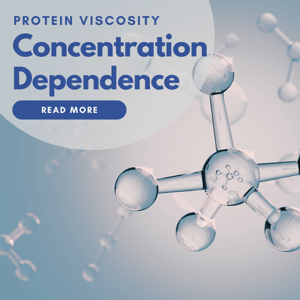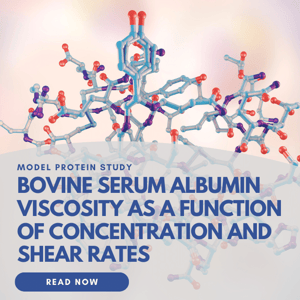
Melting Point: Can Your Proteins Take the Heat?
Application Note Download
Heating a protein beyond a critical temperature can cause it to lose its higher order structures. In the concentrated regime, this molecular unfolding can result in gelation making viscosity measurements inappropriate for determining this transition.

Even dilute solutions can exhibit local gelation if the proteins are able to migrate to a hydrophobic air interface, which is the case for traditional rotational rheometer or capillary viscometer experiments
Download our application note where we explain how the viscosity of dilute protein samples can be monitored as function of temperature and the hydrodynamic radius can be estimated from a single concentration intrinsic viscosity analysis.

.jpeg?width=300&name=Woman%20scientist%2c%20documents%20and%20hands%20writing%20_575258496-min(1).jpeg)
TOUCH
Read
Applications
ReadApplications

Read
Testimonials
ReadTestimonialsGo to page

Browse
Webinars
Browse WebinarsGo to page
.png?width=200&height=58&name=RheoSense%20Logo%20(REGISTERED).png)



